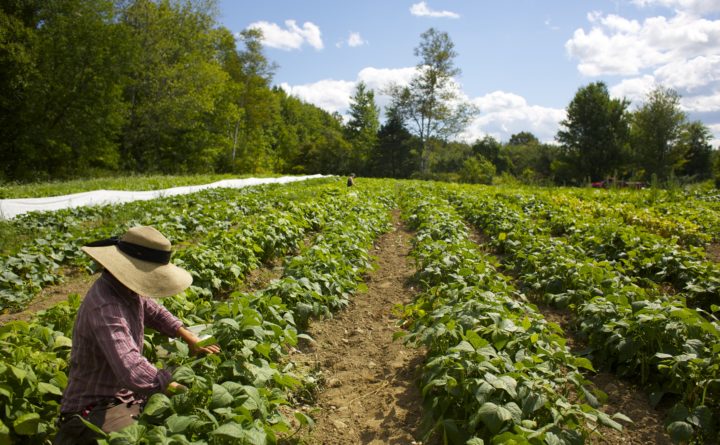In recent years, Maine’s so-called farming renaissance has been vaunted as both a hopeful spot in the state’s economy and a magnet that is drawing some young people back to the land.
But the U.S. Department of Agriculture’s most recent Census of Agriculturemakes it clear that it’s not just green pastures and bountiful harvests here. According to the 2017 census, which was released last month and which covers the years 2012 to 2017, there are some reasons to be concerned about the state of farming in Maine.
—The loss of about 10 percent of Maine farmland, with a drop from 1.45 million acres in 2012 to 1.3 million acres in 2017.
—A loss of 573 farms in the five year span, from 8,173 farms in 2012 to 7,600 farms in 2017.
—A 15.8 percent decline in average net income per farm, from $20,141 in 2012 to $16,958 in 2017.
These and other changes to the Maine agricultural landscape seem alarming to Ellen Sabina, the outreach and communications director of the Maine Farmland Trust.
“In our view, what has really struck us were those three main points … that Maine lost a significant amount of farmland and a lot of farms, and that there’s also this difficult economic condition that farmers are facing in Maine and across the country, too,” she said. “We feel that’s a call for all of us to step up and support farms now, before it’s too late.”
Both hope and gloom in the farming outlook
The number of farmers in the state increased from 13,168 in 2012 to 13,414 in 2017, perhaps because the 2017 farm census changed the way officials collected demographic information about the people who make decisions about a farm. The number of women principal producers nearly doubled, rising from 2,381 in 2012 to 4,265 in 2017.
[Maine farmers are taking extreme measures to protect their farms for future generations]
But even with the growth in numbers of young farmers, the average age of Maine farmers still increased according to this census, from 55.1 years old in 2012 to 56.5 years old in 2017.
The loss of farmland in Maine and the increasing overall age of the state’s farmers is a worry to Sabina and other agriculture experts, but the bright spots are hopeful, she said.
End of the line for one Maine farm
All of it just wore her down.
“The realities can be crushing,” Katz said. “It’s really hard, and of course it’s really hard. Everyone knows it is and expects [it] to be really hard. But it’s totally relentless. It’s a 24-hour a day, 7-day a week job.”
“It’s extra hard if you have a family,” she said. “Farm kids are incredibly bright and engaged, but my kids didn’t know that Maine had beaches. Last year was the first time we went hiking.”
It has been a relief for her to take a non-farm job, albeit one that is still in agriculture — she works at Johnny’s Selected Seeds in Albion. She now has health insurance and a retirement savings plan, coworkers she enjoys and more. And Katz is still hoping to be part of Maine’s agriculture community — just in a different way than she was before.
Katz encourages others to do the same.
“Buy their food. Like, a lot of it,” she said. “And don’t balk at the price. I don’t know why, but people feel like farmers should be the hardest-working people in society and still make zero dollars.”
This article originally appeared on www.bangordailynews.com.








